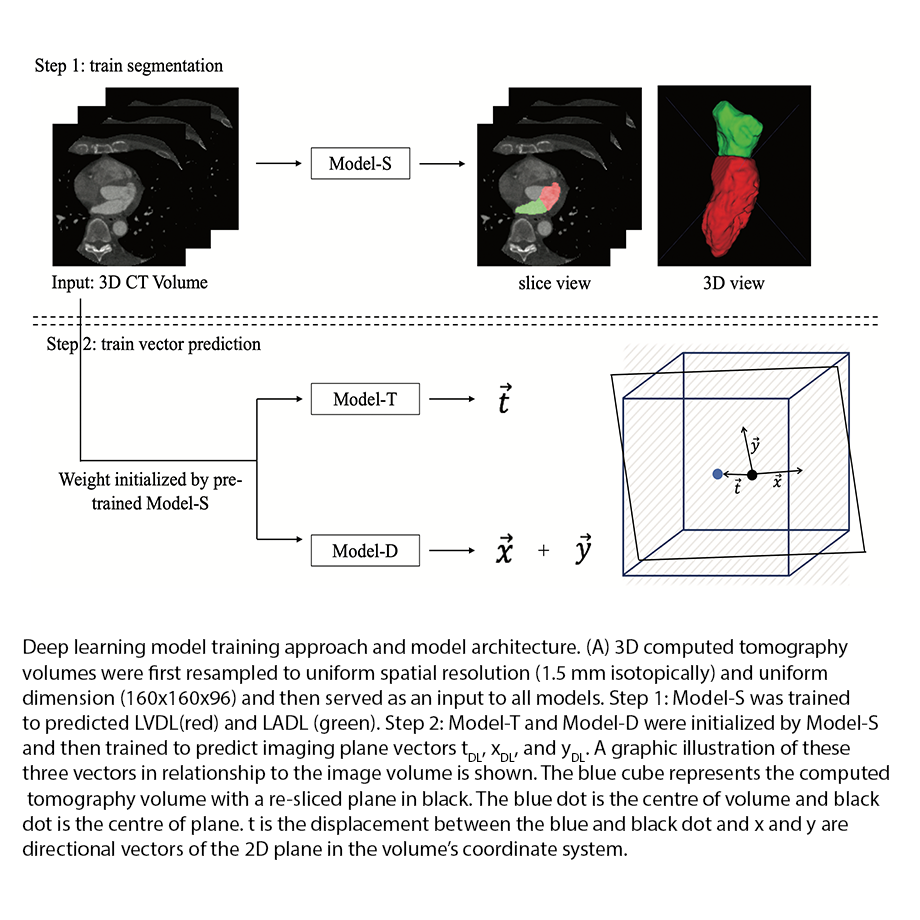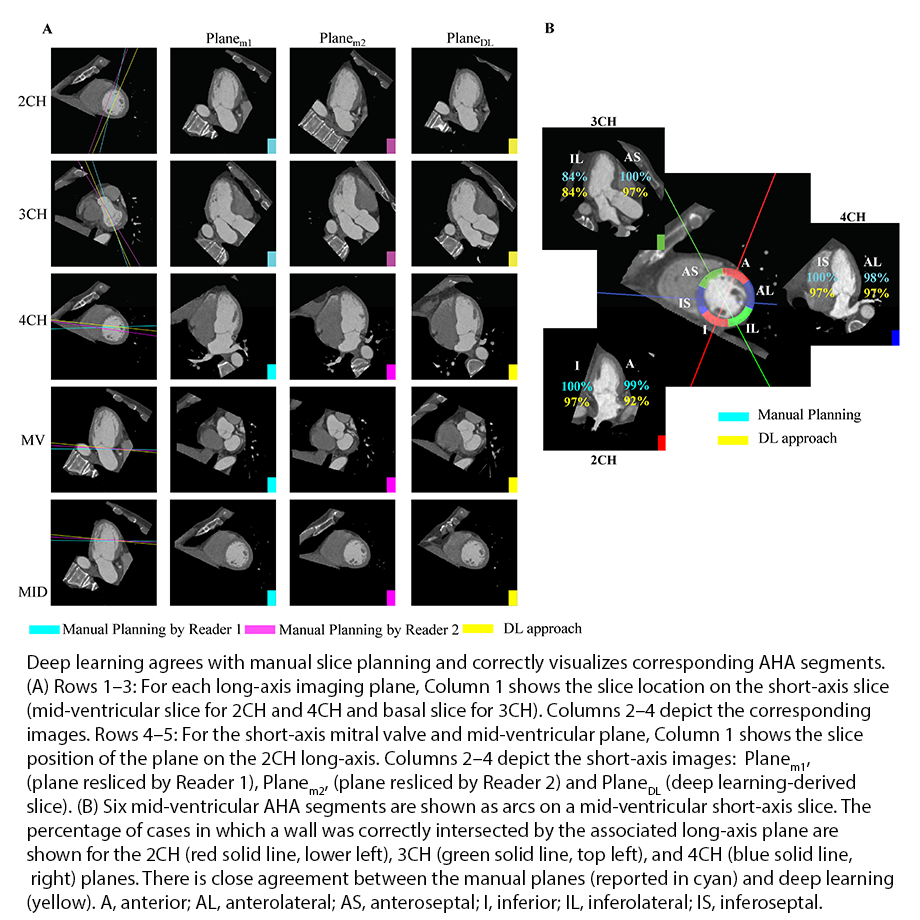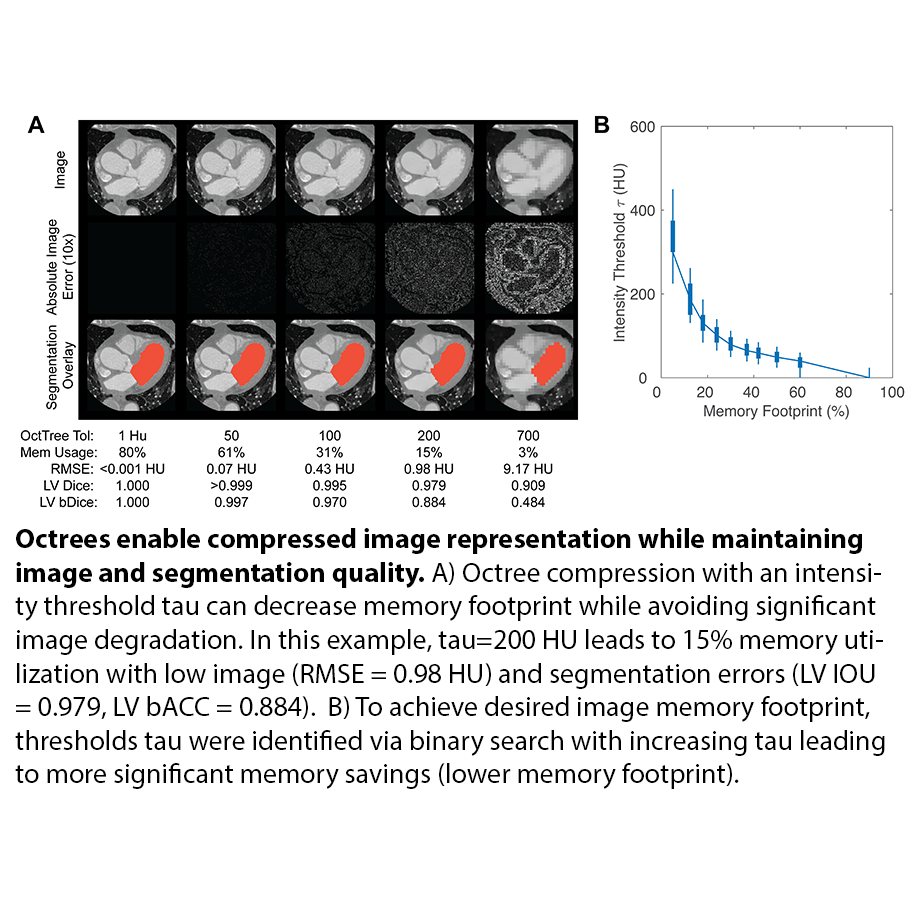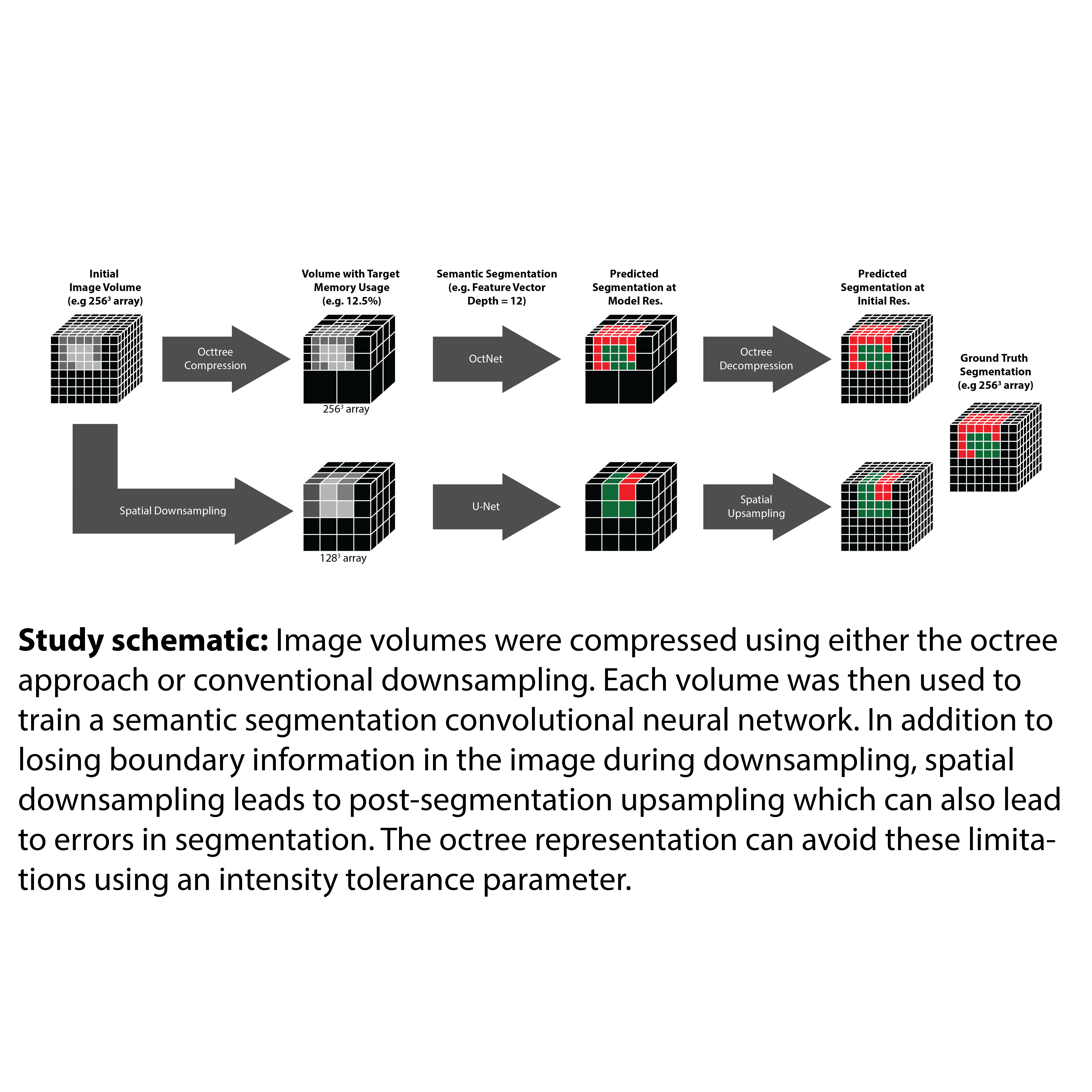Our group has developed machine-learning approaches to improve analysis of cardiac images. Automated tools trained using expert annotations can be applied to large datasets and reduce variability. We've shown that multiple tasks can be performed using a shared architecture. This enales robust training even with limited numer of patints.
We've also shown that the accuracy of the analysis depends on how the data is represented. Specifically, octrees are a way to represent large 3D image arrays in a memory-efficient manner. This improves the accuracy when segmenting the boundaries of the heart - which is key for analyzing heart motion.
More details on these efforts can be found below.
Automated Quantification of Function and Identification of Short- and Long-axis Imaging Planes
We have developed a convolutional neural network (CNN)-based method to both quantify heart size and function and identify the 2D imaging planes that cardiologist convetionally use to visualize the heart.
The time needed to annotate each dataset limited the size of our dataset. Therefore, we used a shared CNN architecture and performed transfer learning between the labeling and slice planning models to improve training. This shared architecture is shown in the left image.
After training, we compared the imaging planes to those obtained by experts and saw close agreement (right image).
A key benefit of this automated framework is that it can facilitate evaluation of patients over time. Here, we show the results of a patient who underwent follow-up imaging at 3 months. The slice planning algorithm successfully accounts for any differences in patients positioning. This improves our ability to directly evaluate changes in size/function on corresponding images.
Short- and long-axis slices at baseline
Follow-up imaging (3 months later)
This work, led by Zhennong Chen, was published in the European Heart Journal Digital Health as:
Memory Efficient Image Representation Improves Boundary Segmentation
CT image volumes are large and consume a significant portion of the memory available on a GPU. This limits the complexity of machine-learning model that can be applied. Octrees are an image representation which can improve memory utilization by compressing areas with similar image intensity. We've adapted an Octree-based machine-learning framework to perform segmentation of the myocardial blood pool.
First, we showed that a intensity threshold parameter can be used to control the extent to which the image is compressed. This can lead to significant reductions in memory utilization without impacting the quality of the image.
While increased levels of compression decreases image quality, it enables increased machine-learning model complexity. We evaluated the impact this trade-off has on the resulting segmentation and identified an improvement at intermediated levels of compression and model complexity.
This work, led by Kunal Gupta, was published in Radiology: Artificial Intelligence journal as:





